8.4 Market entry strategies for Poland, empirical evidence
After the opening of the former communist CEE states many Western companies seized the opportunity to enter a new market with 330 million consumers, but they did so in different ways. In order to identify basic patterns of strategic behaviour and to test the above hypothesis, the main results of a survey of 102 Western companies operating in Poland and other CEE markets are discussed below. While the sample consisted of enterprises from different sectors, all the persons interviewed were in charge of international sales or related departments. In Section 8.4.4 we shall revisit the Beiersdorf case (Chapter 7) as it provides example of successful market entry by means of foreign direct investment.
8.4.1 Motives for market entry
Based on the eclectic paradigm, the main goal of our research in CEE was to identify the key reasons for firms choice of market entry strategy, especially in respect of advantageous combinations of the OLI factors. The first step was to ascertain the motives for Polish market entry. The working hypothesis was that motives are determined by OLI categories and that companies with different motives for market entry choose different entry strategies in order to strengthen their competitiveness . Accordingly the interviewees were asked to assess the importance of various motives for entry into Poland. Subsequently attitude dimensions were determined by means of a principal axis factor analysis. Figure 8.4 shows the results for four factors (in accordance with the Kaiser criterion; Cattell, 1966, p. 247) and the corresponding factor correlations .
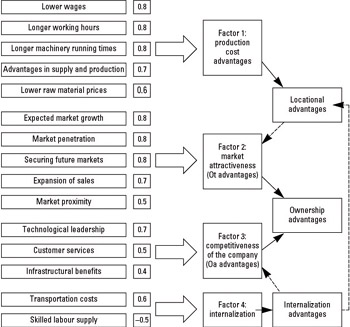
Figure 8.4: Empirically tested OLI motives for CEE market entry
Factor 1 “ production costs advantages “ consisted of wages and supply-side issues. The second factor “ marked attractiveness “ concerned expectations about the sales potential of the Polish market and the opportunities it was perceived to offer. In factor 3 “ competitiveness of the company “ a company s competitive advantage in technology and its customer service facilities were of particular importance to many of the firms in the sample. The items that made up the fourth factor “ internalization “ were inversely correlated in our results in that transportation costs were positively valued if production was conducted in the West for export to the East, while a skilled labour supply took precedence if production took place in the East.
In terms of Dunning s approach, production cost advantages and market attractiveness can be equated to Dunning s locational advantages (L). Variables such as sales expansion and market growth (market attractiveness) might result in economies of scale and hence are also transaction-specific ownership advantages (Ot). The items in factor 3, competitiveness of the company, can be seen as ownership advantages (Oa), and internalization advantages (I) are revealed in our data on the fourth factor. Therefore the first part of Dunning s paradigm and of our hypothesis can be confirmed: there are three determinant factors in or major motives for market entry “ ownership, locational and internalization advantages. The relationship between motives for entry and form of entry is examined in the following subsection.
8.4.2 Forms of market entry
Figure 8.5 shows the forms of market entry chosen by the sample enterprises. With a share of 65 per cent, export strategies were the most common way of starting business in a CEE country, followed by the establishment of a wholly owned subsidiary (60 per cent) and cooperation with host-country firms (48 per cent). Only 15 per cent acquired a business abroad. The majority of the cooperative ventures (65 per cent) were joint ventures, the rest consisting of licensing or franchising arrangements. The Western partners equity share of the joint ventures was usually higher than 50 per cent. Forty per cent of the sample had first entered their chosen market via exports, and then moved more and more operations, such as sales and services or manufacturing, to the host country.
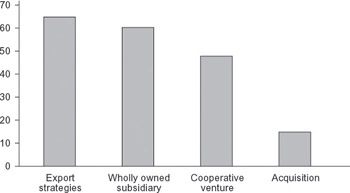
Figure 8.5: CEE market entry forms (per cent)
In our survey we paid special attention to the advantages of cooperative market entry and why it was preferred to other forms. When companies had decided against this form it was mainly because of a belief that the venture could only work if it was managed independently, and that there was a danger they would lose their exclusive know-how to competitors . Others said that it was too early to consider a cooperative venture as the market was not yet ready for it, that they had had a bad experience of such ventures in the past or that they had not been able to find a suitable partner.
As shown in Figure 8.6, the host-country partner s knowledge about market factors such as customers and competitors was the most important reason for cooperation (95 per cent), followed by speedier market entry (81 per cent), preventing attractive host-country firms from cooperating with Western competitors (68 per cent), legislative restrictions (60 per cent), tariffs and other trade barriers (29 per cent), economies of scale (28 per cent) and the reduction of financial risks (21 per cent). For the Eastern partners the most important motive for cooperating was to gain access to capital, technological and managerial know-how, and brand names (for further analysis see Sadowski, 2001).
Where problems arose with the cooperative ventures they were mainly due to communication misunderstandings, divergent management and business cultures with disparate goals and values, and financial considerations. However not every company experienced difficulties.
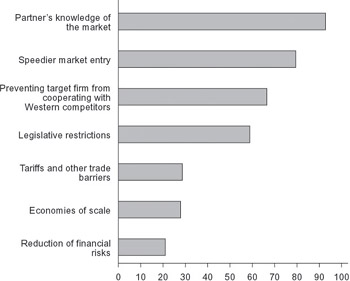
Figure 8.6: Motives for setting up a cooperative venture
In order to test the relationship between motives for market entry and form of market entry a cluster analysis was conducted to separate the sample enterprises into groups that were internally homogeneous and distinct from one another. The motive dimensions given in Section 8.4.1 served as cluster variables. With the help of the single linkage method all cases that differed strongly from the rest, and thus did not fit any of the possible clusters, were identified and excluded from further analysis. The subsequent grouping process using the Ward method revealed two major clusters. This can be rated as satisfactory according to the F-figures, which show the ratio between the variance of a cluster and the total variance of the sample and thus allow homogeneity per cluster to be checked (Backhaus et al., 1996, p. 310).
The characterization of the clusters is derived from t-figures (Figure 8.7), which express standardized differences between the means per factor of each cluster and those of the sample. Positive t-figures indicate that a particular factor is of greater importance to a particular cluster than to the rest, and negative values mean the opposite (Backhaus et al., 1996, p. 310 f.) As can be seen, the first cluster judged market attractiveness and competitiveness to be most important. Because 35 per cent of the firms in this cluster sold consumer goods and 26 per cent were service industries (Figure 8.8) they can be classified as sales oriented brand- name sellers. As shown in Figure 8.9, the most common form of market entry for this cluster was exporting (70 per cent). Since a number of firms decided to use more than one form of entry at the same time, overall 61 per cent of firms built a wholly owned subsidiary, 24 per cent engaged in joint ventures, 12 per cent acquired a host-country firm and the rest sat up licensing or franchising arrangements.
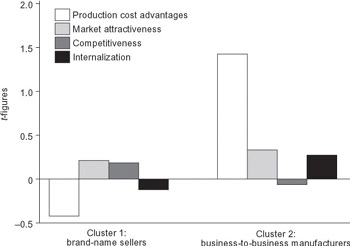
Figure 8.7: Characterization of clusters
For the second cluster production costs were the most important consideration, followed by market attractiveness and internalization advantages. This cluster was dominated by equipment manufacturers and mechanical engineering firms (45 per cent, Figure 8.8) and can therefore be labelled production- and supply-oriented business-to-business manufactures. This was mirrored in the firms market entry choice (again, more than one form was used by a number of the firms): 73 per cent founded a wholly owned subsidiary, 55 per cent arranged a joint venture, 55 per cent exported their products, 36 per cent acquired a host-country enterprise, and 27 per cent used licensing strategies (Figure 8.9).
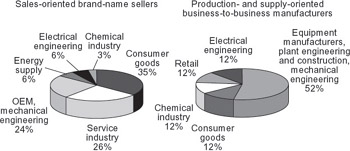
Figure 8.8: Industry composition by cluster

Figure 8.9: Market entry forms per cluster
The above findings confirm Dunning s propositions (Table 8.3). The brand-name sellers wanted to capitalize on their competitive advantages in attractive CEE markets (ownership advantages). Internalization advantages were of secondary importance and locational advantages “ in the form of production cost advantages “ were of little concern. Hence export strategies dominated. Wholly owned subsidiaries (direct investment) came second because proximity to the customer (market proximity) was of great importance to business-to-consumer brand-name sellers (see also the Beiersdorf example in Chapter 7). Business-to-business manufacturers obviously put production cost advantages first and market attractiveness second. This led to an advantage configuration that “ although different from the cluster one advantage configuration “ also favoured direct investment FDI (wholly owned subsidiaries or joint ventures).
8.4.3 Influence of politics on the entry decision
Between 1995 and 2000 the volume of foreign direct investment in Poland increased sixfold. However between August 2000 and August 2001 mergers and acquisitions in CEE as a whole fell by 38 per cent to US$22 billion. With 355 contracts (worth US$4.8 billion) concluded in 2001, Poland is still considered the most attractive investment country in the region. This figure, however, represents a reduction of 65 per cent compared with the previous year. The biggest investors in CEE are from France and Germany. French companies largely buy into financial institutions, whereas German companies are mainly interested in the telecommunication industry. For example German Telekom paid US$6.6 billion for eight acquisitions between August 1999 and August 2000. Investment from Russia is still high, primarily in petrochemical sector. American investors “ though still in third position “ reduced their CEE engagement by 80 per cent during the period (FAZ, 2001a, p. 16).
However EU enlargement and recovery of the world economy could stimulate an investment upswing. Furthermore the present Polish government has pledged to ease the acquisition of property ( agricultural land and woodland) by foreigners. Whereas the former premier favoured a changeover period of 18 years, this traditionally delicate issue will be reduced to a period of 12 years (with some further exceptions; see Flueckiger, 2001, p. 13; FAZ, 2002, p. 6). [5]
Interestingly, with the dismantling of trade barriers between the EU and Poland since its application for EU membership there has been a change in Western companies motive for entry: whereas during the 1990s investors were attracted to Poland s low labour costs (which of course is still true today as the average income is just US$375 per month), nowadays it is the huge internal market of almost 40 million people that is attracting new investors (Knight and Webb, 1997).
With open markets Western companies often favour exporting as a market entry mode, rather than direct investment. The value of German exports to CEE rose to US$90 billion in the first three quarters of 2001, of which Poland received the second largest share (US$18.53 billion). At the same time (thanks to the comparatively high educational level) there was a shift from investment in labour- intensive industries (such as textiles and clothing) to high-tech industries. The investments by Philips and Alcatel are but two examples of the latter (Sadowski, 2001, p. 720). The market entry strategy of another company, the Beiersdorf group , whose case study stands at the centre of this book, is examined in the following subsection.
8.4.4 Beiersdorf s market entry strategy for Poland
As discussed in Chapter 7 the Beiersdorf group, the producer of Nivea and other leading branded goods, entered the Polish market by acquiring an interest in Pollena-Lechia SA (now Beiersdorf-Lechia) in Poznan in 1997, [6] and by 1998 it held the majority of shares.
The founding of wholly owned subsidiaries is the market entry form that is considered as most appropriate by Beiersdorf. While some managers of the subsidiaries are expatriates from Hamburg headquarters, Beiersdorf primarily employs local people. This helps Beiersdorf being accepted by the Polish public as a local company ( ˜insider ) and it facilitates an adequate addressing of consumer and retail target groups. Employees are integrated into international project teams , which ensures a consistently standardized brand appearance, whereas some marketing parameters such as, for example local advertising can still be differentiated.
In terms of regional strategy, Poland is regarded as the key country to CEE markets in general. The country s strategic importance for Beiersdorf is reflected in the company s total investment of C=88 million in Poland. A new production plant was built in October 2001 and integrated into the paneuropean Beiersdorf network. Its commissioning builds another milestone in the strategic decision to reacquire the Nivea trademark rights, which in many countries had fallen into foreign hands as a consequence of World War II. The Nivea trademark rights in Poland used to be at Pollena-Lechia; ˜Nivea Krem was an already established leading trademark (Beiersdorf, 2002).
With regard to its timing strategy , the Beiersdorf group consequently introduces its different product lines when entering a new country market, with Nivea multipurpose cream and lotion being the first products to be brought to market. More specific cosmetics, like for example the ˜Visage product line (facial cosmetics), are launched on second place, then other product ranges follow. Currently, Beiersdorf is introducing Nivea hair care products to CEE markets.
Referring to the market stimulating strategy , Beiersdorf pays more attention to the quality of sales than to its quantity, in order to reach a top market position for each of its brands in every country. Yet, Nivea has reached the number one position with its skin care products in every CEE market. ˜Nivea Visage facial cosmetics, which were introduced later to the market, account six times for the number one position and three times for number two in CEE (Beiersdorf, 2002; Woelfer, 2001).
The positive start of Beiersdorf in Poland was fostered by high publicity and sympathy scores in CEE, that were due to the fact that the Nivea brand name had already been well-known in Poland thanks to the local supplier Pollena-Lechia and to license agreements in former Czechoslovakia and Hungary. Moreover, Nivea had been available in hard-currency shops during the communist regime in all CEE countries.
The formation of the Nivea brand name results from a stepwise strategic process, which is well adapted to environmental conditions of the market and to the consumers wishes and demands. The positive future prospects for Nivea in CEE are highlighted by generally increasing per capita expenses for Nivea products. For example, Nivea per capita expenses in Russia have risen from C=0,45 in 2000 to C=0,90 in 2001. Poland already reaches C=3, in comparison to C=16 in Switzerland (Beiersdorf 2002; Woelfer 2001).
[5] Hungary and the Czech Republic have already agreed to a changeover period of seven years.
[6] According to Beiersdorf (2002), ˜This means that the company from Hamburg is once again on ground that forms part of its history. In 1929 the foundation stone was laid here for a factory which was then opened in 1931. After 1945 the entire complex passed into state ownership.
EAN: 2147483647
Pages: 121